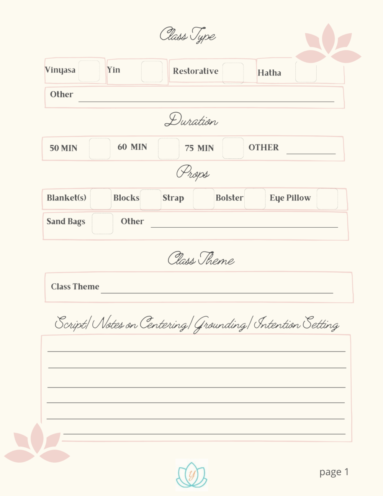In a previous post, we talked about Planning and Teaching Yoga Workshops. So, what is the difference between a workshop and a series? Read on as we discuss the differences, benefits, and more.
Benefits for the Teacher and the Studio
As a new yoga teacher, proposing to teach a series class, like a workshop, may be a way to get your foot in the door so to speak, at a yoga studio. The studio does not need to make a commitment to adding another permanent class to their schedule and they can try you out as a teacher.
Likewise, you don’t need to make a long-term commitment to adding a permanent class to your schedule. You can see how you like teaching at the studio. If the series is a success, it’s a win-win for everyone.
Benefits for Students
The benefits for students to enroll in your series are countless:
- Students will learn new skills, broaden their horizons, and become educated based on the content you deliver.
- Students receive the obvious benefits of practicing yoga, pranayama, and the other self-care methods that will be offered.
- The commitment for students is short-term for the number of weeks you are offering your series.
- Connection with community is established (this is true if offered online or in-person).
Just as in a yoga workshop, you will want to choose a topic that you feel passionate about or that you have specific experience with and want to share with others. Make sure your series topic is something that will bring value to the yoga community. A series is a great way to introduce yoga to students.
- Do you have specific credentials or experience in an area that can be related to yoga?
Examples: reiki, ayurveda, fascia release, journaling, yoga for anxiety, depression, or grief
- Have you identified a gap in what’s being offered to students in your area?
Examples: yoga for beginners, introduction to meditation, sound healing, partner yoga, aerial yoga, hiking and yoga
- Is there a topic you are passionate about or feel comfortable elaborating on?
Examples: Pranayama, self-care, mindful movement, yoga and essential oils
- Is there a seasonal related class that justifies a series?
Examples: yoga for stress during the holidays, breathing and mindfulness through the winter months, spring metamorphosis
Yoga topics that fit nicely into a series:
- 7 Chakras
- 5 Koshas
- 8 Limbs
- 5 Yamas
- 5 Niyamas
Can you think of others? See How to Theme a Yoga Class for more ideas and inspiration.
Differences and Similarities between Workshops and Series
The main difference is time. As a rule, workshops are offered one time, for a duration of anywhere from 2-3 hours. If you have taught a workshop before, I’m sure you’ll agree that there is usually a lot to cover in that short period of time. You may have even sent students home with additional information that you were not able to cover during the workshop or directed them to additional resources.
For this reason, while presenting a workshop it’s wise to stay on a strict schedule. There’s a lot of planning that goes into both workshops and series, but when it comes to staying on time, it’s especially important during that one-time workshop where you only have one shot at covering everything.
On the other hand, series classes are usually the length of a regular class – anywhere from 60 to 90 minutes. Series classes generally meet weekly for 4 – 6 weeks; therefore, there is more flexibility with your timetable. You have more leeway to adjust what may not be covered in one class to be added to the next or, you can work ahead if time permits.
Both require planning, as mentioned above, but with a series of classes you have more total time and are able to present more information, making it feasible for more involved topics.
Planning and Promoting your Series
Your series, like workshops, should have a description (a summary) with an outcome of what students will take away by attending. For a series, you could have one outcome for the entire series, or you can break it down further for each meeting, or both.
Next, create an agenda. Here is where you will look at your outcome(s) and decide how you want to organize your content to meet the outcomes. This will determine how many weeks your series will meet. Remember, you can always include multiple outcomes for each meeting. For example, during a series on the Koshas, students may learn about the Manomaya and Vijnanamaya kosha in one session.
Remember, you will want to include time for practice during each of your sessions. Take this into consideration when organizing your content and planning your delivery. Your series will be much more appealing if students are rewarded with the benefits of a yoga practice with each meeting – putting theory into practice! In your final meeting, plan to summarize the entire series of classes. End your series with a culminating experience.
With the series description, outcome(s), and agenda, you can begin to promote your series of classes. This can be done through whatever means you promote other classes, (e.g., website, social media, e-mail, etc.).
Now that you have the basics you are ready to plan and teach your first yoga series! Best of luck!
Remember to read How to Plan and Teach Yoga Workshops for additional tips that may apply to both series and workshops.
Visit my Store page for books, more resources, and inspiration.





